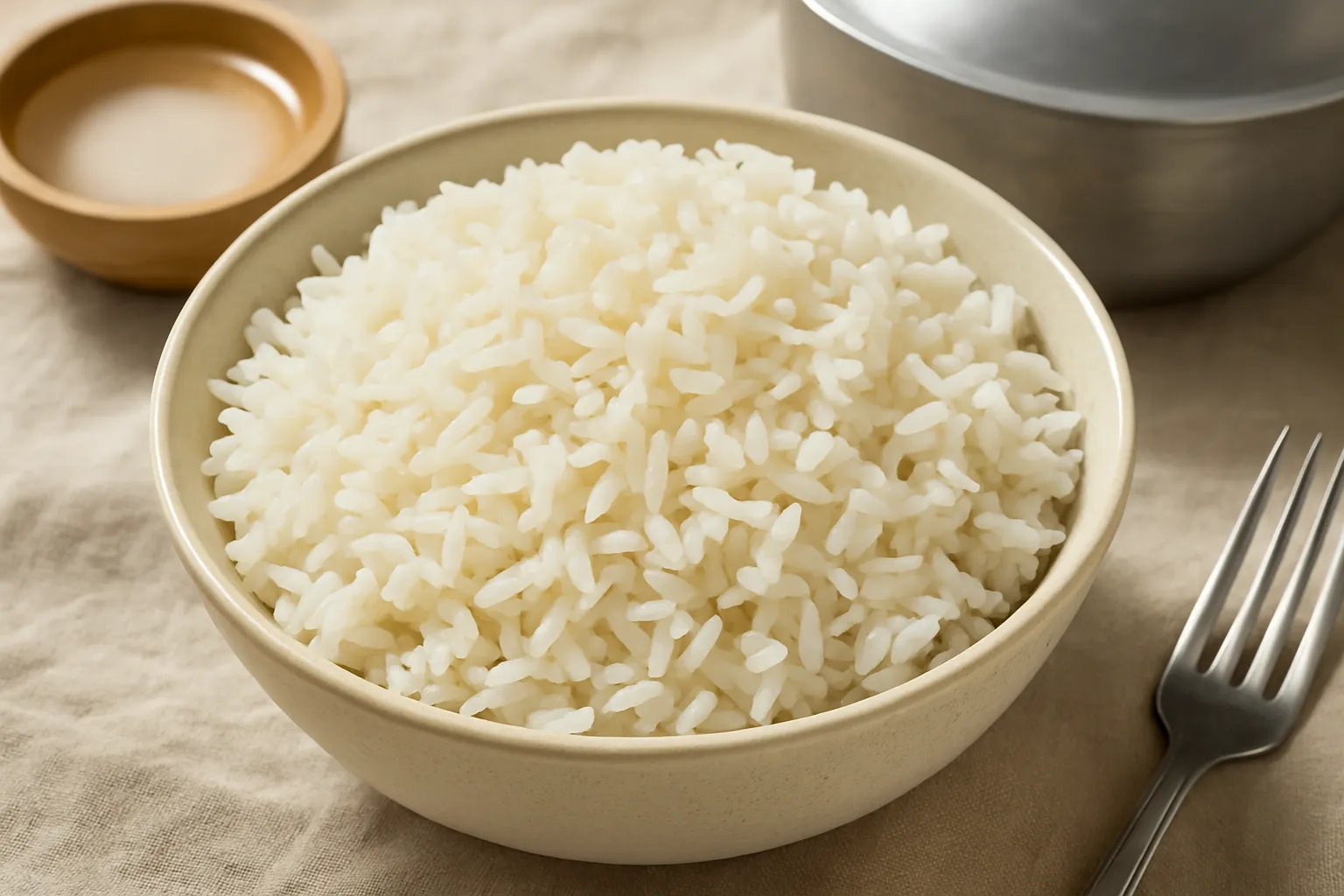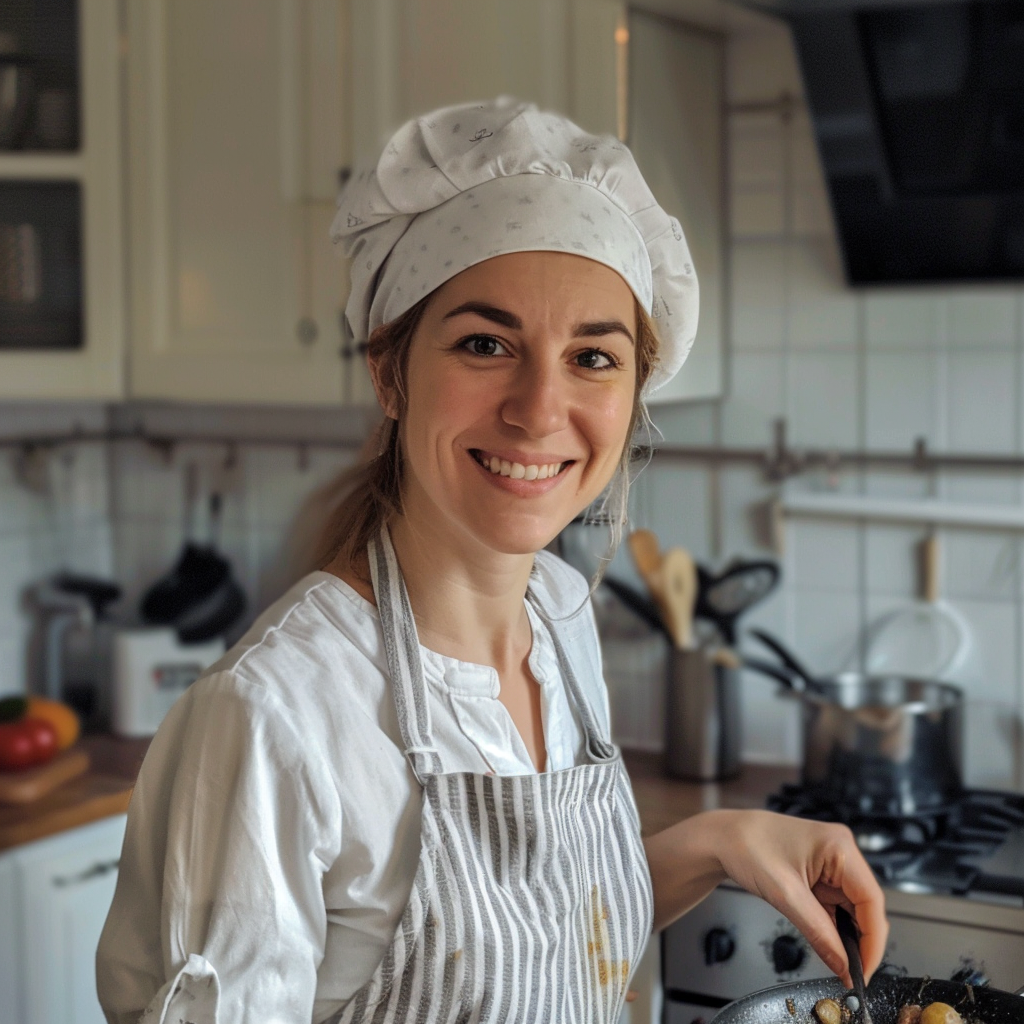Cooking rice might seem simple, but anyone who has ever ended up with a pot of mushy, sticky, or half-cooked grains knows it can be surprisingly tricky. The truth is, perfectly fluffy rice doesn’t just happen—it’s the result of a few smart techniques and consistent habits. Whether you’re preparing a quick weeknight dinner or hosting a big family gathering, mastering the art of rice can elevate every meal you serve. In this guide, you’ll discover 22 genius hacks that guarantee light, airy, and delicious rice every single time. From understanding water ratios to small flavor-enhancing tricks, these tips will help you turn rice into a side dish worth remembering.
1. Rinse the Rice Before Cooking
One of the most overlooked steps in cooking rice is rinsing it before it goes into the pot. Rice grains naturally have a coating of starch that, when left on, can make your rice clump together and turn out sticky instead of fluffy. By rinsing, you wash away that extra starch and give the grains a better chance of staying separate. A simple method is to place the rice in a bowl, cover it with cold water, and swirl it gently with your hand. The water will look cloudy at first, but after draining and repeating the process two or three times, it will run much clearer. That’s your sign that the rice is ready to cook. I still remember the first time I skipped rinsing out of laziness—it turned into one sticky block. Never again.
2. Use the Right Water-to-Rice Ratio
Perfect rice comes down to more than just cooking; it’s about balance, and the water-to-rice ratio is at the heart of it. Too much water and you’ll end up with mush, too little and you’ll be crunching half-cooked grains. The ratio depends on the type of rice you’re cooking. White long-grain rice usually needs 2 cups of water for every cup of rice. Fragrant types like basmati or jasmine require a bit less, about 1 ½ cups of water for every cup of rice. Brown rice, being denser, calls for more—around 2 ½ cups of water for each cup of rice. Once you know these numbers, you’ll never have to second-guess again. For me, learning this trick turned rice from a gamble into a guarantee.
3. Let It Simmer, Don’t Boil
The way you cook rice after the water starts boiling makes a huge difference. The key is to resist the urge to let it keep boiling hard. Once the water hits a boil, turn the heat down low and cover the pot with a tight-fitting lid. This switch from boiling to simmering ensures the rice cooks gently, allowing each grain to absorb water evenly without breaking apart. Stirring at this stage only interferes, so it’s best to leave it alone and trust the process. I used to peek and stir constantly because I was worried it might burn, but all that did was make it stickier. Once I started letting the steam do its job, my rice became light and consistent every time.
4. Steam It Off the Heat
When the timer goes off, it’s tempting to grab a spoon and dig right in, but patience here pays off. Turning off the heat and letting the rice sit, covered, for about 10 minutes gives the grains a chance to finish absorbing steam. This resting period makes a big difference in texture, giving you rice that’s fluffier and easier to separate. Think of it as giving the rice a breather before serving. I once rushed through this step for a family dinner, and everyone noticed the rice was wetter and clumpier than usual. Ever since, I always let it sit, and it’s become my secret weapon for impressing guests with perfectly cooked rice.
5. Fluff with a Fork, Not a Spoon
The final step may seem small, but it’s what seals the deal for fluffy rice. When you use a spoon, you press the grains together, which can make them stick and clump. A fork, on the other hand, gently lifts and separates the rice without squishing it. This way, each grain stands on its own, giving you that light, airy texture everyone craves. After resting the rice, I always take a fork and work through it slowly, watching the steam rise as the grains loosen beautifully. It’s a little ritual now, and it never fails to make the rice look and taste like it came straight out of a professional kitchen.
6. Choose the Right Pot and Lid
Believe it or not, the pot you use can make or break your rice. A heavy-bottomed pot distributes heat more evenly, preventing hot spots that can scorch the bottom while leaving the top undercooked. Pair that with a tight-fitting lid, and you trap in the steam needed for fluffy grains. A thin pot with a loose lid often leads to uneven cooking and too much moisture escaping. I once tried making rice in a lightweight saucepan, and the bottom layer turned into a crunchy crust while the top was barely done. Switching to a sturdy pot with a snug lid solved that problem instantly.
7. Add a Touch of Oil or Butter
Adding a small spoonful of oil or a pat of butter to your rice before or during cooking can do wonders. Not only does it prevent the grains from sticking together, but it also adds a subtle richness and depth of flavor. This trick is especially useful for varieties like basmati, which benefit from a bit of fat to enhance their fragrance. Growing up, my mother always dropped in a knob of butter while cooking rice, and I didn’t realize until later that it was her way of guaranteeing silky, separate grains every time.
8. Salt the Water Before Cooking
Seasoning rice properly starts from the very beginning, not at the end. By adding salt to the cooking water, you give the grains a chance to absorb flavor as they cook, making them more delicious and not bland. It’s similar to seasoning pasta water—skip it, and the result always feels lacking. I once forgot to salt the water for a dinner party, and no matter how much seasoning I added later, the rice never tasted quite right. Now I treat that pinch of salt as non-negotiable.
9. Avoid Peeking While It Cooks
Opening the lid while the rice is cooking may seem harmless, but it actually lets out the steam that’s crucial for proper cooking. Each time you peek, you disturb the balance of heat and moisture, which can lead to uneven results. Trusting the process is key here. I used to lift the lid constantly, worried the rice might boil over or stick, but all it did was ruin the texture. Once I committed to leaving it alone until the timer rang, the rice turned out consistently better.
10. Adjust for Altitude or Old Rice
Not all rice behaves the same, and sometimes it’s about knowing your conditions. At higher altitudes, water boils at a lower temperature, so rice may take longer to cook and need a bit more water. Similarly, older rice tends to be drier and benefits from slightly more liquid to soften up. Paying attention to these small adjustments can save you from undercooked or tough grains. I discovered this when I moved to a higher elevation—suddenly my usual ratios didn’t work, and it took a few tries to get it right. Once I made the adjustment, fluffy rice was back on the table.
11. Toast the Rice Before Adding Water
Toasting rice lightly in a bit of oil before adding water brings out a nutty aroma and helps the grains stay firm. This technique is common in pilafs and Mexican rice, but it works beautifully for plain rice too. The gentle browning creates a protective coating around the grains so they don’t break apart during cooking. I picked up this trick from a friend who always had the most fragrant, restaurant-style rice at her dinners, and it quickly became a step I never skip when I want extra flavor.
12. Use Broth Instead of Plain Water
For richer-tasting rice, swap water with chicken, beef, or vegetable broth. The grains soak up the savory flavors, turning a simple side dish into something special. Even just replacing half the water with broth makes a noticeable difference. I love doing this when making rice to serve with grilled chicken or roasted vegetables—it feels like you’ve made a complete dish without extra effort. Once you try it, plain water may start to feel a little boring.
13. Add Aromatics for Extra Flavor
Rice is a blank canvas, and adding aromatics like garlic, onion, ginger, or even a bay leaf can transform its taste. Tossing these into the pot while cooking infuses subtle flavors throughout. For fragrant varieties like jasmine or basmati, I sometimes drop in a cinnamon stick or cardamom pod, and the result is as good as takeout. This little touch is something I started doing after traveling, and now my rice often gets compliments even when it’s just meant as a side.
14. Don’t Cook Too Much at Once
It’s tempting to make a huge pot of rice for the week, but cooking too much at once often leads to uneven texture. The rice at the bottom can turn soggy while the top stays underdone. Smaller batches cook more evenly and give you better control over the texture. I learned this the hard way when meal prepping—I ended up with a pot that was part mush, part crunch. Now I cook in moderate amounts and reheat later, and it always tastes better.
15. Cool and Store Properly for Leftovers
Fluffy rice doesn’t stop at cooking—it’s also about how you handle leftovers. Let the rice cool completely before storing it in an airtight container in the fridge. This prevents condensation, which can make the rice soggy. When reheating, sprinkle a little water over it and cover so it steams back to life. I often make extra rice for the week, and this method keeps it as fluffy on day three as it was when fresh. It also saves me from wasting food while still enjoying perfect texture.
16. Try the Absorption Method
The absorption method is one of the most reliable ways to achieve fluffy rice. You measure the exact amount of water your rice needs, let it simmer until the liquid is fully absorbed, then remove it from heat to rest. Because the rice cooks in just enough liquid, each grain plumps up perfectly without excess moisture. I started using this method after reading about how professional chefs handle rice, and it really simplified things—no draining, no guessing, just consistently light rice.
17. Use a Rice Cooker or Instant Pot
Modern appliances take the guesswork out of cooking rice. A rice cooker or Instant Pot automatically regulates temperature and timing, delivering consistently fluffy results with minimal effort. All you have to do is measure correctly and press start. For busy days, I rely on my rice cooker as a foolproof way to get rice right while focusing on the rest of the meal. It’s not just convenient—it’s a guarantee of success.
18. Add a Pinch of Acid
A splash of lemon juice or vinegar in the cooking water can help keep rice from becoming overly sticky. The acid slightly changes the structure of the starch, encouraging the grains to stay separate. It also brightens the flavor, especially if you’re pairing the rice with vegetables or seafood. The first time I tried this with lemon juice, I was surprised at how much fresher and lighter the rice tasted. Now I often use it when making rice for salads or lighter dishes.
19. Cover with a Towel While Resting
For an extra step of fluffiness, place a clean kitchen towel between the pot and lid during the resting period. The towel absorbs excess moisture that would otherwise drip back into the rice, preventing sogginess. This trick is especially useful when cooking large batches. I learned it from a family friend who always made perfect Middle Eastern rice dishes—it’s simple, but it makes a noticeable difference in texture.
20. Cook in Small Batches and Reheat
If you often struggle with getting rice fluffy in large portions, try cooking smaller batches and reheating them later. Reheating with a touch of water and a covered lid restores the texture beautifully. This approach is popular in restaurants where rice needs to be perfect every time. I’ve adopted the same method for dinner parties, and guests always think the rice was just made fresh.
21. Choose High-Quality Rice
Not all rice is created equal. Premium varieties like aged basmati or jasmine often cook up fluffier and more aromatic compared to cheaper bulk brands. Investing in good-quality rice pays off in texture and taste. When I switched from generic long-grain to a higher-grade basmati, the difference was immediate—fluffier grains, stronger fragrance, and overall better meals.
22. Practice and Adjust to Your Stove
Every stove and pot combination behaves a little differently, so don’t be discouraged if your first tries aren’t perfect. Over time, you’ll learn how much heat your setup needs, how long it takes, and whether you need a splash more water or a few extra minutes of cooking. Mastering rice is part science and part intuition. I remember burning a few pots in the beginning, but those small mistakes taught me exactly how to adapt, and now cooking rice feels effortless.
Perfectly fluffy rice is no longer a mystery once you know the right steps. By applying these 22 hacks—from rinsing the grains to giving them a proper rest—you can transform your rice from ordinary to extraordinary. The best part is that these techniques are simple, practical, and easy to incorporate into your everyday cooking. With a little patience and practice, you’ll never have to worry about gummy or undercooked rice again. Instead, you’ll enjoy a bowl of grains that are tender, separate, and ready to complement any dish you prepare.


